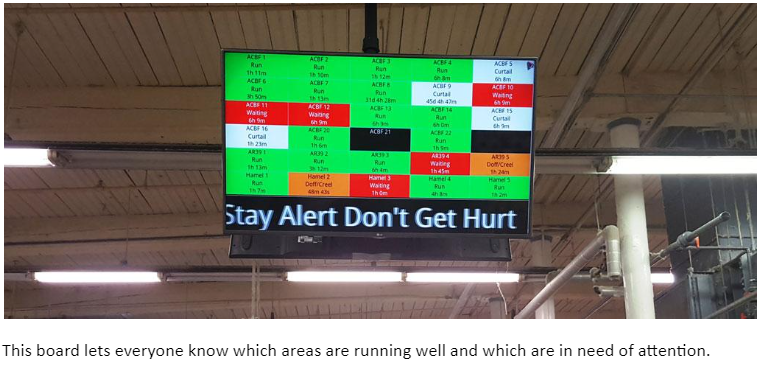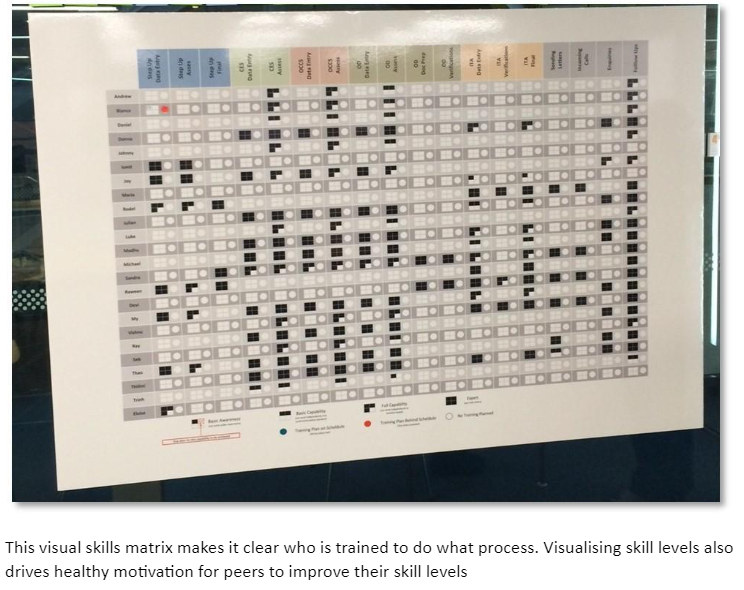Visual management is a well proven methodology used by some of the world's best organisations. These practices have gained popularity across industries due to their relative ease of deployment and the speed of improvement gained. Organisations who apply Visual management practices well achieve better communication (both internally and with their customers), better organization and ultimately better productivity. In this article, we will explore the best practices for implementing visual management and share inspiring success stories of organizations that have reaped its benefits. Whether you're new to visual management or looking to optimize your current practices, these insights will guide you towards a more productive and visually-driven workplace.

Understanding the Core Principles of Visual Management:
Before delving into implementation strategies, it's crucial to understand the core principles of visual management. It involves using visual cues, such as charts, color-coded indicators, and signage, to provide real-time information at a glance. Clear and concise visuals help in visualizing workflows, identifying issues, and fostering transparency among team members. By establishing a shared visual language, organizations can promote clarity, accountability, and collaboration.
Selecting the Right Visual Tools and Techniques:
Choosing the appropriate visual tools and techniques is key to successful implementation. Kanban boards, for example, are widely used in agile project management to visualize tasks and their progress. Andon systems with lights or alarms signal abnormalities in manufacturing processes, enabling immediate intervention. Other popular visual tools include visual dashboards, standardized work instructions, and visual metrics. It's important to evaluate the specific needs of your organization and select the tools that best align with your goals and processes.

Furthermore it can be tempting to “copy and paste” so to speak, existing Visual Management systems from other organisations or departments. In most cases existing examples can provide a great starting point. However a fair degree of modification and adjustment once in use, is almost always necessary to get a Visual Management system that actually works.
Engaging and Training Employees:
For visual management to thrive, it's essential to engage and train employees. Educate your team about the benefits of visual management and how it can positively impact their work. Involve them in the design and implementation process to ensure buy-in and ownership. Provide training sessions to familiarize employees with the visual tools and techniques being introduced. Encourage feedback and continuously improve the visual management systems based on employee suggestions. By involving employees and making them feel part of the process, you can foster a culture that embraces visual management.

Creating Clear and Consistent Visual Standards:
Consistency is vital in visual management. Establish clear visual standards that are easy to understand and follow across the organization. Define colours, symbols, and icons that convey consistent meanings. Ensure that visual displays are kept up-to-date and aligned with current processes. By creating a standardized visual language, you minimize confusion and enhance the effectiveness of visual management practices.

Success Stories: Real-world Examples of Visual Management:
Let's explore a couple of success stories where visual management has made a significant impact. A Melbourne caravan company we recently worked with, implemented a visual management system that included color-coded workstations, visual metrics, and daily team huddles. As a result, they reduced production lead time time by 24%, minimized defects, and improved overall efficiency.

Another Aircraft Maintenance organisation that OE Partners helped, adopted Kanban boards to track tasks and visualize their progress. This helped them identify bottlenecks, optimize workflows, and enhance collaboration among team members. The overall result was a 67% increase in productivity. These success stories highlight the tangible benefits that visual management can bring to organizations across different industries.
In Conclusion…
Implementing visual management is a journey that requires thoughtful planning, employee engagement, and adherence to best practices. By leveraging the power of visual cues, organizations can boost efficiency, enhance communication, and foster a culture of continuous improvement. By adopting these best practices and learning from success stories, you can take your organization's visual management practices to the next level.


